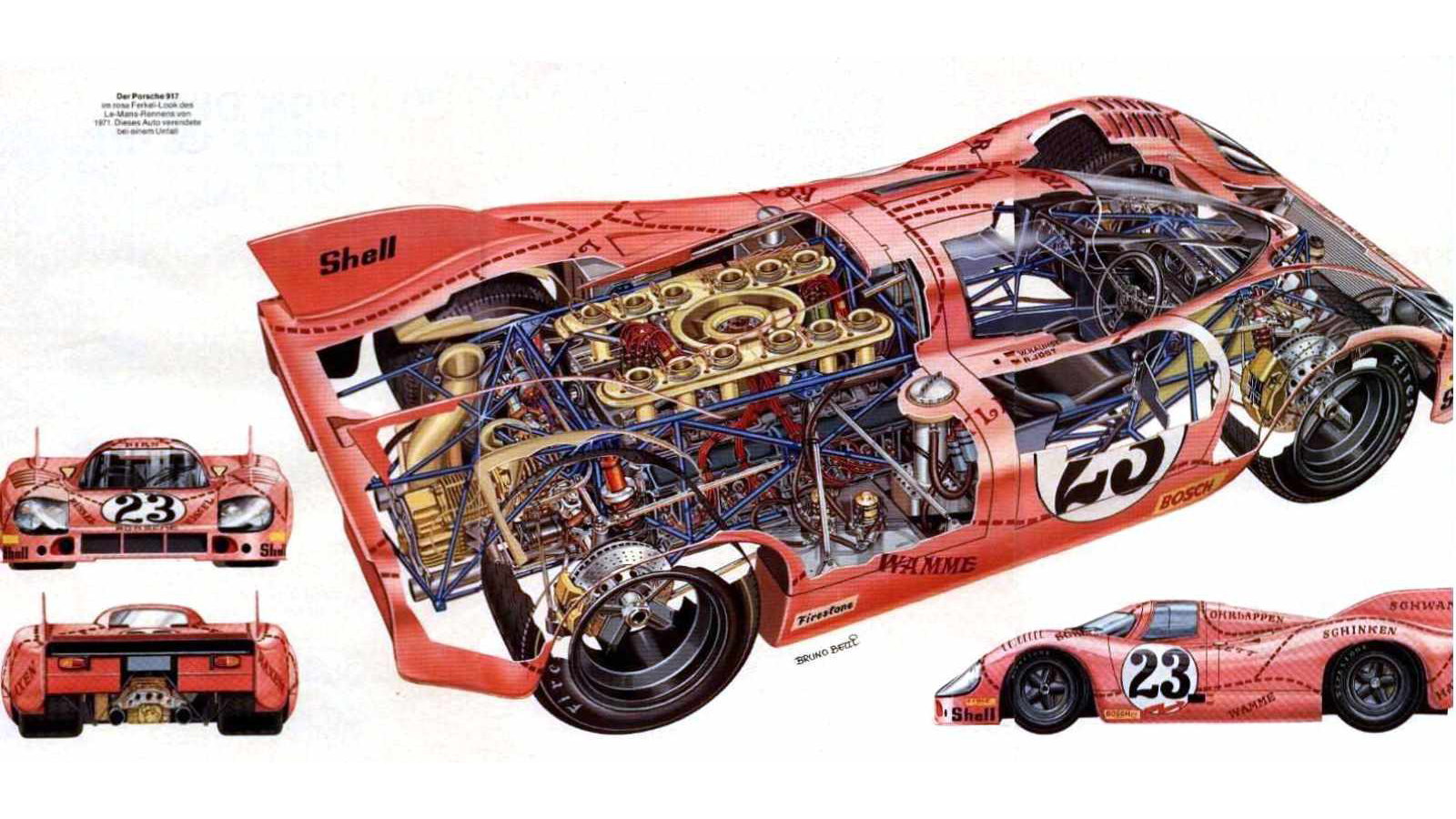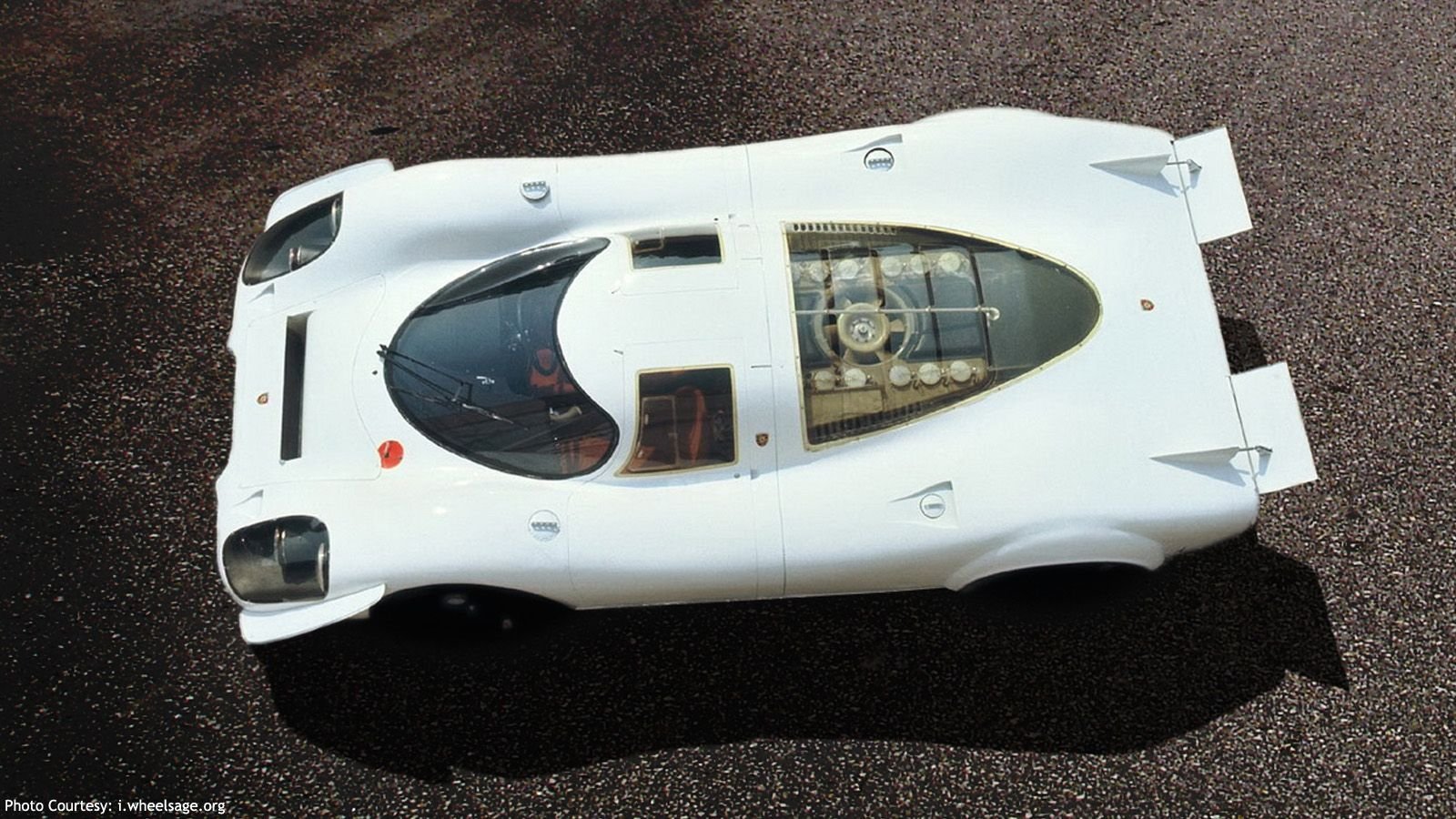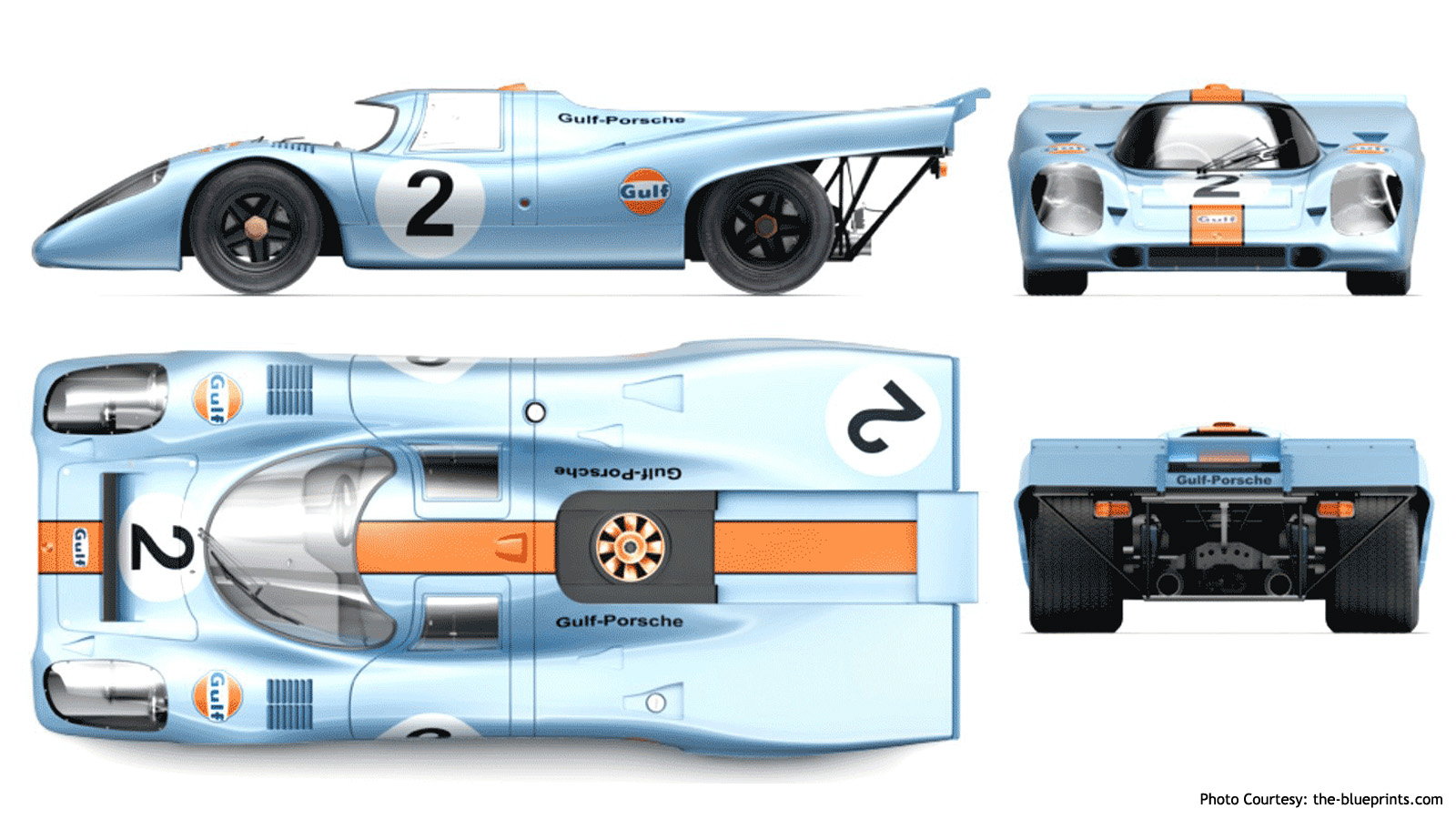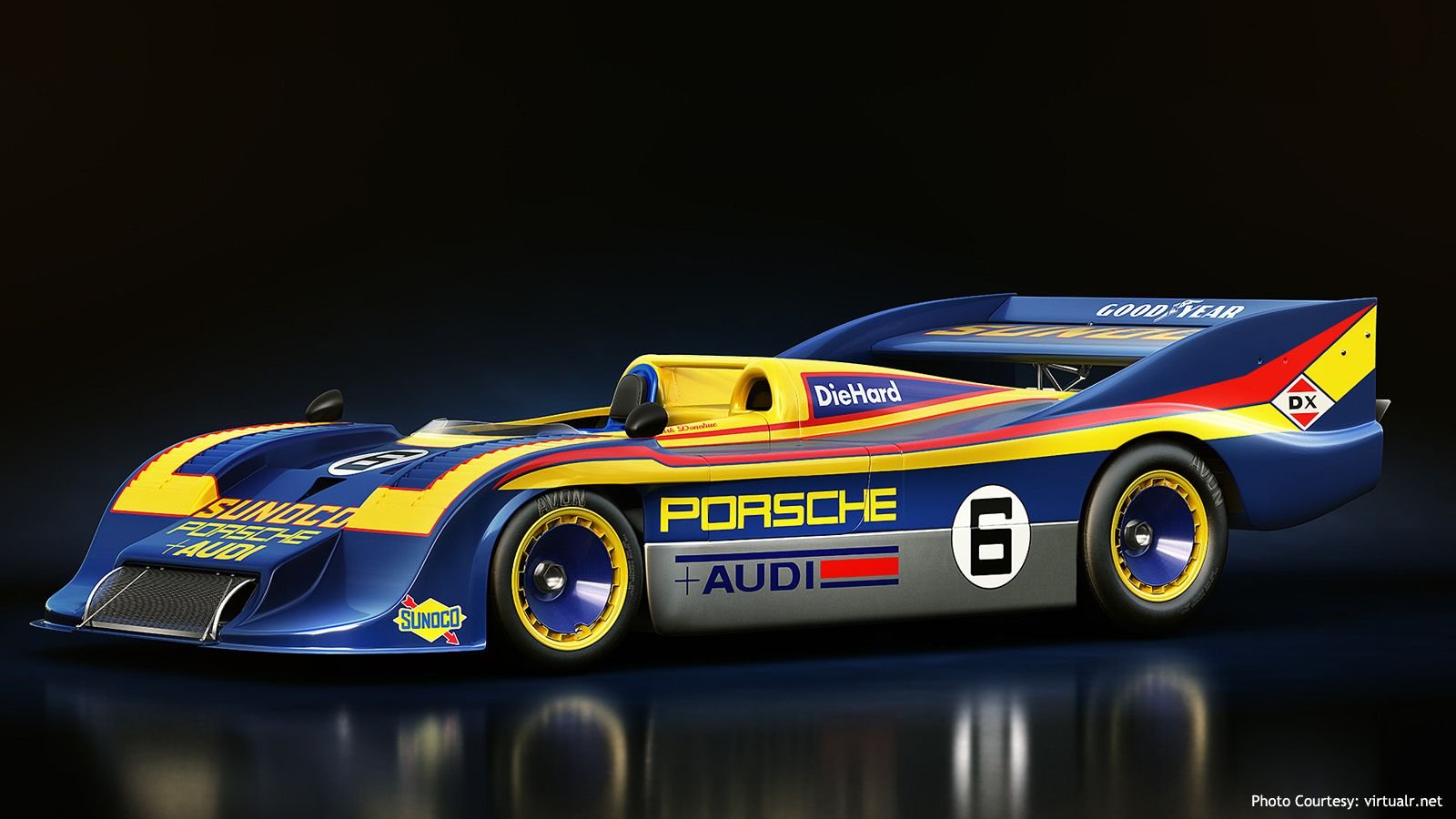7 Things you Should Know About the Mighty Porsche 917
Whether you've always been a fan of the Porsche 917 race car, or you are just hearing about it, here are some things you should know about the legendary racing car.














1. Porsche 917 Construction
The Porsche 917 was designed with speed in mind, so they built an extremely light space-frame structure, with some of the frames weighing less than 100 lbs. Pressurized gas was pumped into the frame tubing to test the welding, and they were not considered usable unless it was air tight. As a purpose built racer, the passenger space was minimized, but there was room for a huge engine, and to accomplish that, the driving position was moved forward so the driver's feet were beyond the front axle. For Can-Am racing engines up to a flat 16 cylinder were tried, but the flat 12 handled better.
>>Join the conversation about the Mighty Porsche 917 right here in the RennList Forum!
2. Versions of 917
There are six main different versions of the Porsche 917, but even the least powerful one produced 620 horsepower. The initial cars were made in 1968-69 and had a broad short tail, and a later short tail variation (the 917K) features fins on the side of the tail which proved to be a winner at LeMans in 1971. In 1970 a version with the long tail was introduced, the Porsche 917LH was created for improved downforce and less drag. Also in 1971 three Interserie Spyder 917 racers were built without a top, to compete in a German inter-series championship. The 917/10 was created in order to compete in the American/Canadian unlimited Can-Am series and featured a turbo flat 12 and unique body work. The "Pink Pig" was the experimental 917/20 variant, designed to have low drag and high speed stability, and was only raced once, at LeMans in 1971 where it qualified 7th but crashed out. In 1973, the Can-Am spec 917/30 was released with 1,100 to as much as 1,580 horsepower, depending on the amount of boost put through the 5.4 liter flat 12. Most of the different variations of the Porsche 917 were extremely close under the skin, the different engine variations and the different body work provided more power and higher top speed or stability.
>>Join the conversation about the Mighty Porsche 917 right here in the RennList Forum!
3. 1969 Poor Racing Results
In 1969, when the Porsche 917 was first being tested, and it was at first seen as unsuccessful. The 917 was extremely unstable at speed, due to its massive 4.5-liter engine, accompanied by a tremendously light total weight. After numerous tests and tuning, it was determined that the long tail body was creating lift on the straights, severely limiting the grip of the rear wheels.
>>Join the conversation about the Mighty Porsche 917 right here in the RennList Forum!
4. 1970 Official Porsche Team
After the unsuccessful testing results of 1969, Porsche made an agreement with John Wyer and his JWA Gulf Team, which soon became the official Porsche team. John Horsmann, the engineer for Wyer, designed a new tail for the 917 quickly created with aluminum sheets taped together to increase the downforce at the expense of drag. The new design significantly improved the 917's stability, finally making it a complete race car.
>>Join the conversation about the Mighty Porsche 917 right here in the RennList Forum!
5. 1970 24 Hours Le Mans
On the 13th and 14th of June, 1970, the 38th Grand Prix of Endurance, Le Mans, took place, and two Porsche 917s were entered. The winners of the 1970 Le Mans with 343 laps were Hans Hermann and Richard Attwood, int the 4.5-liter Porsche 917. Shortly after them in second place was another Porsche 917, with 338 laps, driven by Gérard Larrousse and Willi Kauhsen for the Martini Team.
>>Join the conversation about the Mighty Porsche 917 right here in the RennList Forum!
6. The Most Powerful Sports Car
The Porsche 917/30 Can-Am racer was by far the most powerful race car ever built and raced at the time, and it is still near the top. The 917/30 featured a 12-cylinder 5.3-liter twin turbocharged engine, capable of developing 1,580 horsepower. This monster in race trim would go from 0 to 62 mph in 1.9 seconds, and 0 to 100 mph in 3.9 seconds. The 917/30 had a top speed of 260 mph, making it the faster sports car to ever race.
>>Join the conversation about the Mighty Porsche 917 right here in the RennList Forum!
7. The Final Chapter
In 1981, Le Mans had changed their regulations, and the 917 was finally allowed to race again. The Kremer Racing team entered the race with an upgraded 917 K-81, and even though the car was qualifying in the top 10, it was retired after seven hours of racing due to a collision. The final chapter was at Brands Hatch, where they raced the car competitively for six hours; however, a suspension failure forced the Porsche onto retirement.
>>Join the conversation about the Mighty Porsche 917 right here in the RennList Forum!
For help with keeping your Porsche in racing trim see the how to sections of RennList.com
